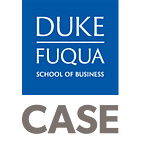Leverage Non-Salary Incentives to Motivate and Retain Talent
How can you best leverage non-salary incentives to effectively motivate and retain talent during scale?
Of course, financial incentives — salary, bonuses, benefits (including healthcare, paid vacation and sick time, education benefits, and retirement contributions) — are one way to recruit, motivate, and retain talent for your scaling journey. However, social enterprises are often constrained in how much they can provide by way of financial incentives, which opens the door to considering how to leverage non-financial incentives. Fortunately, research shows that nonfinancial incentives can prove to be even more effective at motivating staff. A McKinsey survey of over 1000 executives, managers, and employees from a range of sectors showed that three nonfinancial incentives — praise from immediate manager, attention from leaders, and opportunities to lead projects or taskforces — were even more effective motivators than the three highest-rated financial incentives. For specific advice on incentivizing volunteers, see the Empower Volunteers article.
Advice from the field includes:
1. Maximize intrinsic motivations such as play, purpose, and potential.
Social enterprises are well positioned to offer employees engaging work which is more likely to lead to higher performance and retention. According to research outlined in “How Company Culture Shapes Employee Motivation,” intrinsic motivations are critical for engagement and retention and can be grouped into three categories: play, purpose, and potential.
PLAY: Employees are motivated by the work itself and do it because they enjoy it
- Interviewee examples: Smart people like to solve hard problems. And social enterprises are usually tackling the hardest problems, especially as they scale. Harambee attracts and engages talented people because of the complexity of the youth unemployment challenge. “Feeling good about social impact can be rewarding, but not as much as feeling like you
can apply your knowledge and skills to actually solving the problem,” says Maryana Iskander, CEO of Harambee. - Other ideas: Create opportunities for people to brainstorm and be creative together.
PURPOSE: Employees value the work’s impact
- Interviewee examples: “My mom farms, and when I joined One Acre Fund, she enrolled. She just got inputs this year and her yields are already improving… Every day I work knowing that I’m working in a community that I’m actually helping and the job I’m doing directly impacts and improves someone’s life. It’s not just about me getting a salary; it’s about the community. The small things I do here could impact the whole country because agriculture is the backbone of Kenya.” — One Acre Fund IT Manager, Victor Matianyi
- Other ideas: Show how each role furthers the mission and what the impact is on the beneficiaries/stakeholders.
POTENTIAL: The work enhances the employee’s potential
- Interviewee examples: Harambee invests significant time and effort to create opportunities for growth and development for any level of employee. Harambee developed and shares a “Talent Ladder,” showing possible future career pathways within in the organization (see graphic below). Employees who excel in their roles are offered opportunities to be exposed to new areas.
- Other ideas: Create and support personalized employee development plans. (See Village Capital’s “Raising Talent is Just as Important as Raising Capital: 9 Exercises to Build a Team.”)
Example: Harambee Talent Ladder. Employment contract principles — including salary range and contract length — are assigned to each Responsibility Band so that employees can understand, with transparency, what is expected for future growth and promotion.
2. Create compelling non-salary incentives
Non-salary incentives and benefits can be a critical motivator and retention tool, and opportunities exist at many levels of cost. At Boys & Girls Clubs of America, training and professional development opportunities are at the core of the non-salary incentives they offer. In addition to job-related training, BGCA employees can apply for funding to pursue relevant certifications (e.g., Project Management Professional) and post-graduate education. For employees who do not yet have a college degree, BGCA offers incentives to complete it. Given BGCA’s investment in these areas, the organization then expects those employees to remain on staff for a certain period of time. BGCA supplements these major incentive programs with individual and team recognition efforts, including national recognition for tenure in five year intervals (including a token of appreciation), quarterly departmental recognition for living BGCA’s values (including prizes such as restaurant gift certificates), and smaller gifts throughout the year (such as $5 Starbucks gift cards) to reward individual performance. Additionally, interviewees and Scaling Pathways Talent Survey respondents shared other top non-salary incentives or benefits from their organizations:
- Flexibility. E.g., Flexible work location; flexible hours; sabbaticals.
- Training and Development Opportunities. E.g., Informal and formal training; secondments; travel opportunities; rotational opportunities for staff to learn from other areas of the business; opportunities to lead special projects; regular engagements with partners and stakeholders to stay connected to external trends; clear career paths; opportunities to engage with policymakers.
- Connection to mission. Seeing the impact of work (communicated through leadership as well as opportunities to see themselves on the ground); positive feedback from community/stakeholders.
- Culture. Being part of a winning team; fun environment; social events; wellness programs to build resilience (e.g., massages, yoga).
- Recognition and Praise. Performance awards; individual and team recognition.
- Non-Salary HR Benefits. Generous health insurance; time off.
Do’s and Don’ts of Leveraging Non-Salary Incentives to Motivate and Retain Talent
Read next: Institutionalize Culture and Values as You Scale, or return to see all articles in People Power.
This article was written by Erin Worsham, Kimberly Langsam, and Ellen Martin, and released in July 2019.
